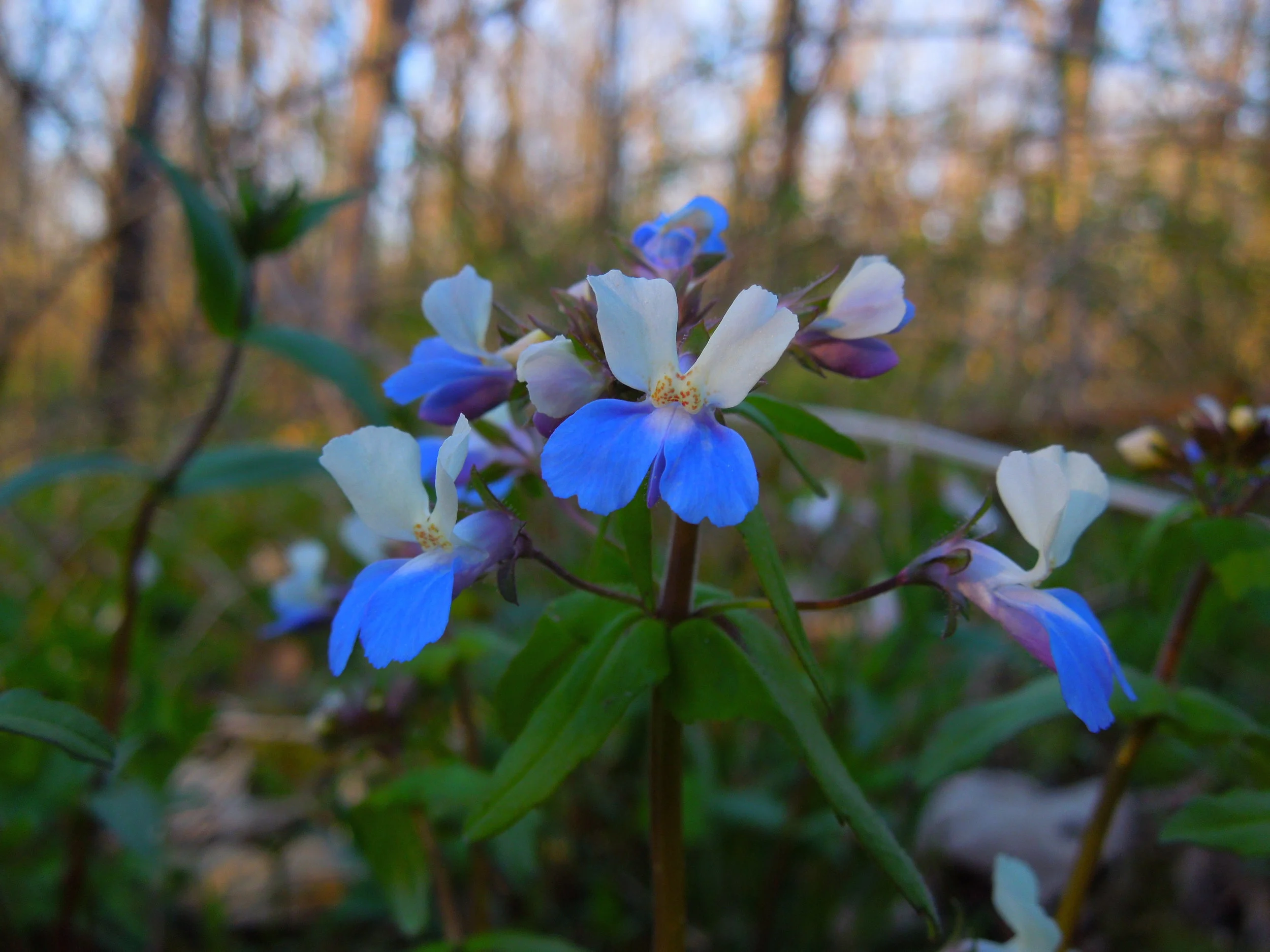For some plant species, pictures will never do them justice. I realized this when I first laid eyes on a colony of blue-eyed Mary (Collinsia verna). I was smitten. These lovely little plants lined the trail of a floodplain forest here in central Illinois. It was the blue labellum that first caught my eye. After years of reading about and seeing pictures of these plants, meeting them in person was a real treat.
C. verna is winter annual meaning its seeds germinate in the fall. The seedlings lie dormant under the leaf litter until spring warms enough for them to start growing. Growth is rapid. It doesn't take long for them to unfurl their first flowers. And wow, what flowers they have!
The bicolored blooms are a real show stopper. The lower lip contrasts starkly with the white top. It's about as close to true blue as a flower can get. Not only are they beautiful, the flowers are marvels of evolution, exquisitely primed for pollination by large, spring-hardy insects. When something the size of a bumble bee lands on the flower, the lower lip parts down the middle, thrusting the reproductive bits up against the abdomen. This plant doesn't take any chances.
Being an annual, C. verna can only persist via its seed bank. Populations can be eruptive, often appearing in mass after a disturbance clears the forest of competition. Most populations exist from year to year as much smaller patches that slowly build the seed bank in preparation for more favorable conditions in the future. Because of its annual life cycle, C. verna can be rather sensitive to habitat destruction.
Seeing this plant with my own eyes far exceeded my expectations. It was one of those moments that I couldn't peel myself away from. I love spring ephemerals and this species has skyrocketed to the top of my list. Its beauty is made all the more wonderful by its ephemeral nature. Enjoy them while they last as it may be some time before you see them again.
Further Reading: [1] [2] [3]


